Search
97123 A System For Storing Cathodic Protection Measurement Data
Also Purchased
07036 PRACTICAL CONSIDERATIONS FOR UPPER LIMITS OF CATHODIC PROTECTION
Product Number:
51300-07036-SG
ISBN:
07036 2007 CP
Publication Date:
2007
$20.00
10034 Cathodic Protection - It's All About Current
Product Number:
51300-10034-SG
ISBN:
10034 2010 CP
Publication Date:
2010
$20.00
01590 PIPELINE CATHODIC PROTECTION USING STEEL REFERENCE ELECTRODES
Product Number:
51300-01590-SG
ISBN:
01590 2001 CP
$20.00
Recently viewed




